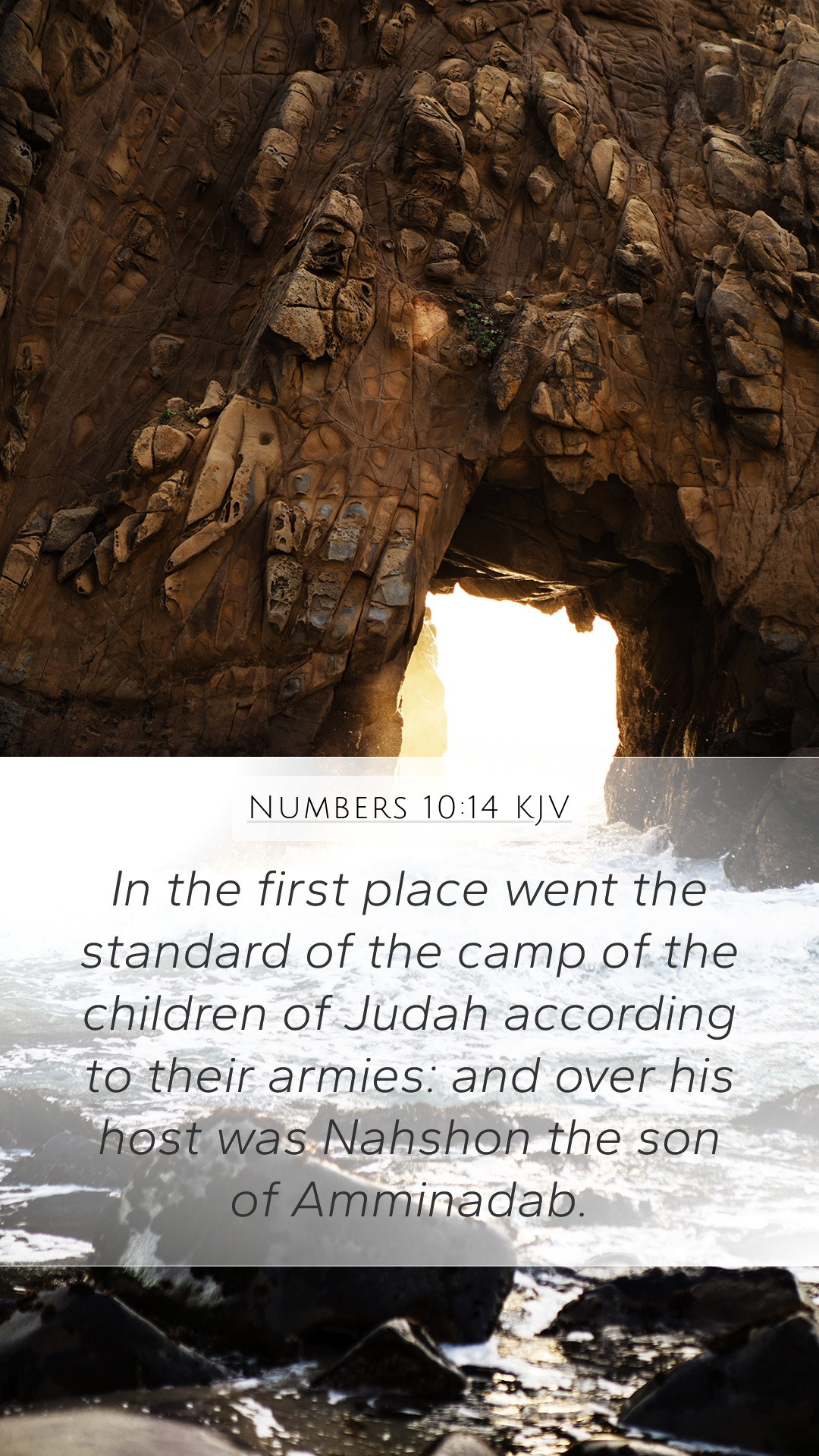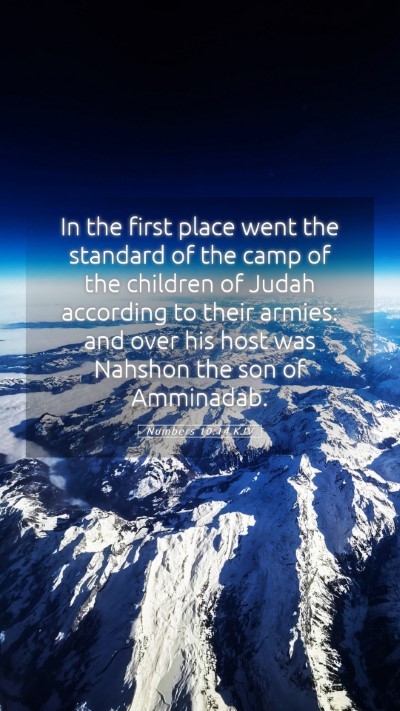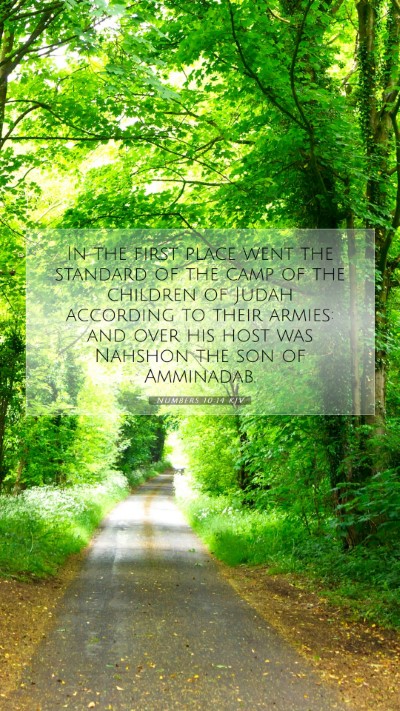Understanding Numbers 10:14 - A Comprehensive Bible Verse Analysis
If you are seeking to deepen your Bible verse understanding of Numbers 10:14, you have come to the right place. This passage discusses the initial movement of the tribes of Israel during their journey in the wilderness. Various public domain commentaries shed light on its meaning and significance.
Bible Verse Text
Numbers 10:14: "And the standard of the camp of the children of Judah set forward first according to their armies: and Nahshon the son of Amminadab was over his army."
Verse Context and Summary
This verse is part of a larger narrative involving the organization and movement of the Israelite camps as they traveled from Mount Sinai. The Lord commanded Moses to arrange the tribes, and each tribe was identified by its own standard or flag. Judah, being the prominent tribe, was the first to travel out.
Historical Significance
According to Albert Barnes, the tribe of Judah had a significant role in Israel's history and was often seen as a leader among the tribes. The reference to Nahshon, son of Amminadab, indicates a lineage of importance, as Judah was the tribe from which King David and ultimately Jesus would come.
Divine Order in Movement
Matthew Henry points out that God's order in moving the camps is critical. It demonstrates that the Lord guided Israel and directed their steps. The arrangement of the camp was not random but part of God’s divine plan.
Leadership and Responsibility
From Adam Clarke's commentary, we learn about the duties of Nahshon. Being the leader of the Judahites signifies trust and responsibility. It emphasizes the importance of leadership within the community of believers, showing that each tribe had its appointed leader to follow.
Textual Analysis and Themes
This verse touches on several key themes that are prevalent throughout Scripture:
- Divine Command: The movement of the tribes was based on God's instructions, showcasing obedience to divine authority.
- Unity and Order: The ordered procession represents unity among the tribes of Israel, necessary for fulfilling God’s commandments).
- Leadership: Highlighting the importance of having designated leaders, which can translate into modern church governance.
Bible Study Insights
This passage can be a source of profound Bible study insights for both individual and **Bible study groups**. It teaches about:
- Understanding Scripture: the significance of structure and order in spiritual matters.
- Application of Bible verses to daily life: the need to recognize and follow divine guidance in our personal journeys.
- Historical context: learning about the significance of tribal distinctions and their implications for Israelite identity.
Cross References
To further enrich your study of Numbers 10:14, consider these related verses:
- Genesis 49:8-10: Prophecy regarding the tribe of Judah.
- Exodus 23:20-21: God's promise to guide Israel.
- Deuteronomy 3:18: The appointment of leaders over Israel.
- Hebrews 7:14: Reference to Jesus being from the tribe of Judah.
Conclusion
Numbers 10:14 emphasizes the structure and divine order established by God amongst His people. Through the comments of renowned scholars such as Matthew Henry, Albert Barnes, and Adam Clarke, we gain rich insights about Bible verse meanings and the nature of leadership and obedience to God's words.
As you study this verse, consider its implications in your faith journey and how it can inform your understanding of leadership within your spiritual community. Engage in online Bible study or utilize Bible study tools to explore further.
Further Study Recommendations
For a more in-depth understanding, explore various Bible study lessons and Bible study guides that delve into the Book of Numbers and the broader narrative of Israel's exodus.


